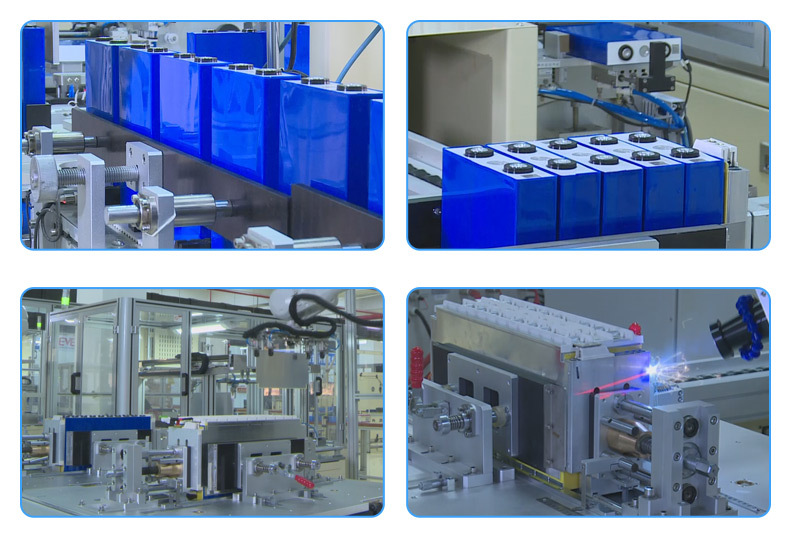Advantage

1. Improvement of safety performance
The P-O bond in the lithium iron phosphate crystal is stable and difficult to decompose. Even at high temperature or overcharge, it will not collapse and generate heat or form strong oxidizing substances in the same structure as lithium cobalt oxide, so it has good safety. A report pointed out that in actual operation, a small part of the samples were found to burn in acupuncture or short-circuit experiments, but no explosion occurred. In the overcharge experiment, high voltage charging that was several times higher than the self-discharge voltage was used, and it was found that there were still Explosion phenomenon. Nevertheless, its overcharge safety has been greatly improved compared to ordinary liquid electrolyte lithium cobalt oxide batteries.
2. Improvement of life span
Lithium iron phosphate battery refers to a lithium ion battery using lithium iron phosphate as a positive electrode material.
The cycle life of a long-life lead-acid battery is about 300 times, and the highest is 500 times. The lithium iron phosphate power lithium battery has a cycle life of more than 2000 times, and the standard charge (5 hour rate) use can reach 2000 times. Lead-acid batteries of the same quality are new for half a year, old for half a year, and for maintenance and maintenance for half a year, at most 1 to 1.5 years, while lithium iron phosphate batteries used under the same conditions will have a theoretical life of 7 to 8 years. Considering comprehensively, the performance-price ratio is theoretically more than 4 times that of lead-acid batteries. High current discharge can quickly charge and discharge high current 2C. With a dedicated charger, the battery can be fully charged within 40 minutes of 1.5C charging. The starting current can reach 2C, but lead-acid batteries have no such performance.
3. Good high temperature performance
The peak value of lithium iron phosphate electric heating can reach 350℃-500℃, while lithium manganate and lithium cobaltate are only around 200℃. Wide operating temperature range (-20C–75C), with high temperature resistance, lithium iron phosphate electric heating peak can reach 350℃-500℃, while lithium manganate and lithium cobaltate are only around 200℃.
4. Large capacity
∩When the rechargeable battery is always fully charged and not discharged, the capacity will quickly fall below the rated capacity value. This phenomenon is called the memory effect. Like nickel-metal hydride and nickel-cadmium batteries, there is memory, but lithium iron phosphate batteries do not have this phenomenon. No matter what state the battery is in, it can be charged and used as soon as it is charged.
6, light weight
The volume of the lithium iron phosphate battery of the same specification and capacity is 2/3 of the volume of the lead-acid battery, and the weight is 1/3 of the lead-acid battery.
7. Environmental protection
Lithium iron phosphate batteries are generally considered to be free of any heavy metals and rare metals (the nickel-hydrogen battery requires rare metals), non-toxic (SGS certification), non-polluting, in line with European RoHS regulations, and an absolute green battery certificate. Therefore, the reason why lithium-ion batteries are favored by the industry is important because of environmental protection considerations. Therefore, the battery has been included in the 863 National High-tech Development Plan during the Tenth Five-Year Plan and has become a key national support and encouragement project. With my country’s accession to the WTO, my country’s export of electric bicycles will increase rapidly, and electric bicycles entering Europe and the United States have been required to be equipped with pollution-free batteries.
However, some experts said that the environmental pollution caused by lead-acid batteries mainly occurred in the company’s irregular production process and recycling process. In the same way, lithium-ion batteries belong to the new energy industry, but they cannot prevent heavy metal pollution. Lead, arsenic, cadmium, mercury, chromium, etc. in the processing of metal materials may be released into dust and water. The battery itself is a kind of chemical substance, so there may be two kinds of pollution: one is the pollution of process excrement in the production engineering; the other is the pollution of the battery after it is scrapped.
Lithium iron phosphate batteries also have their shortcomings: for example, poor low-temperature performance, low tap density of the cathode material, and the volume of lithium iron phosphate batteries of equal capacity is larger than lithium-ion batteries such as lithium cobalt oxide, so they do not have advantages in miniature batteries. When used in power lithium batteries, lithium iron phosphate batteries are the same as other batteries, and they have to face battery consistency problems.
Post time: Dec-02-2020



